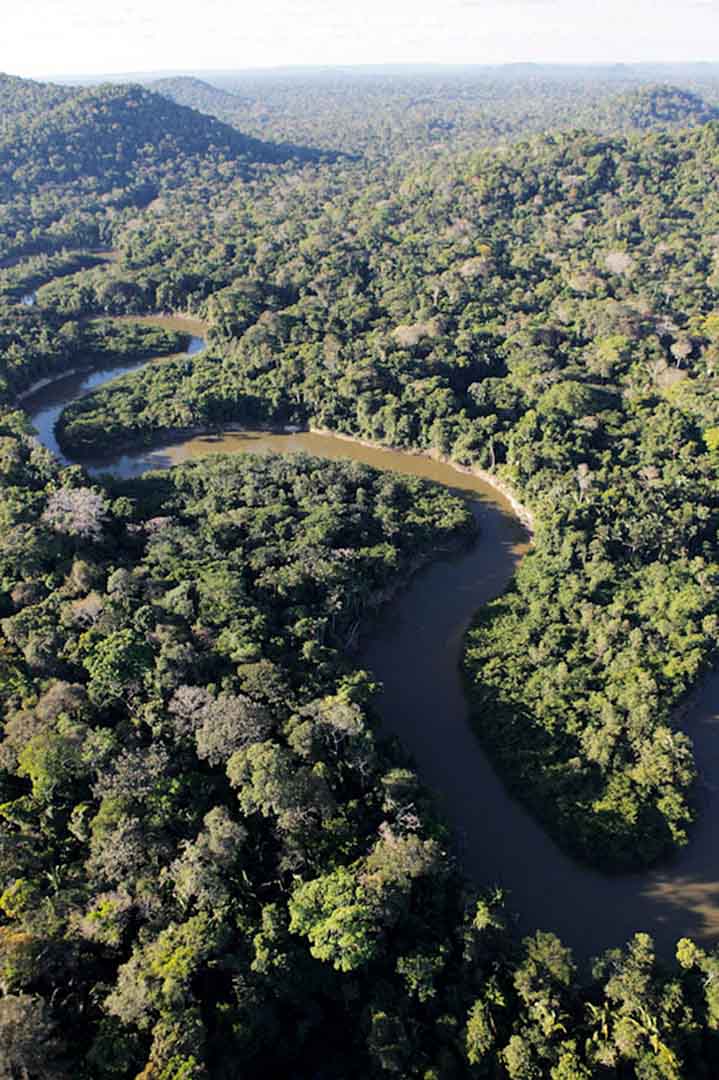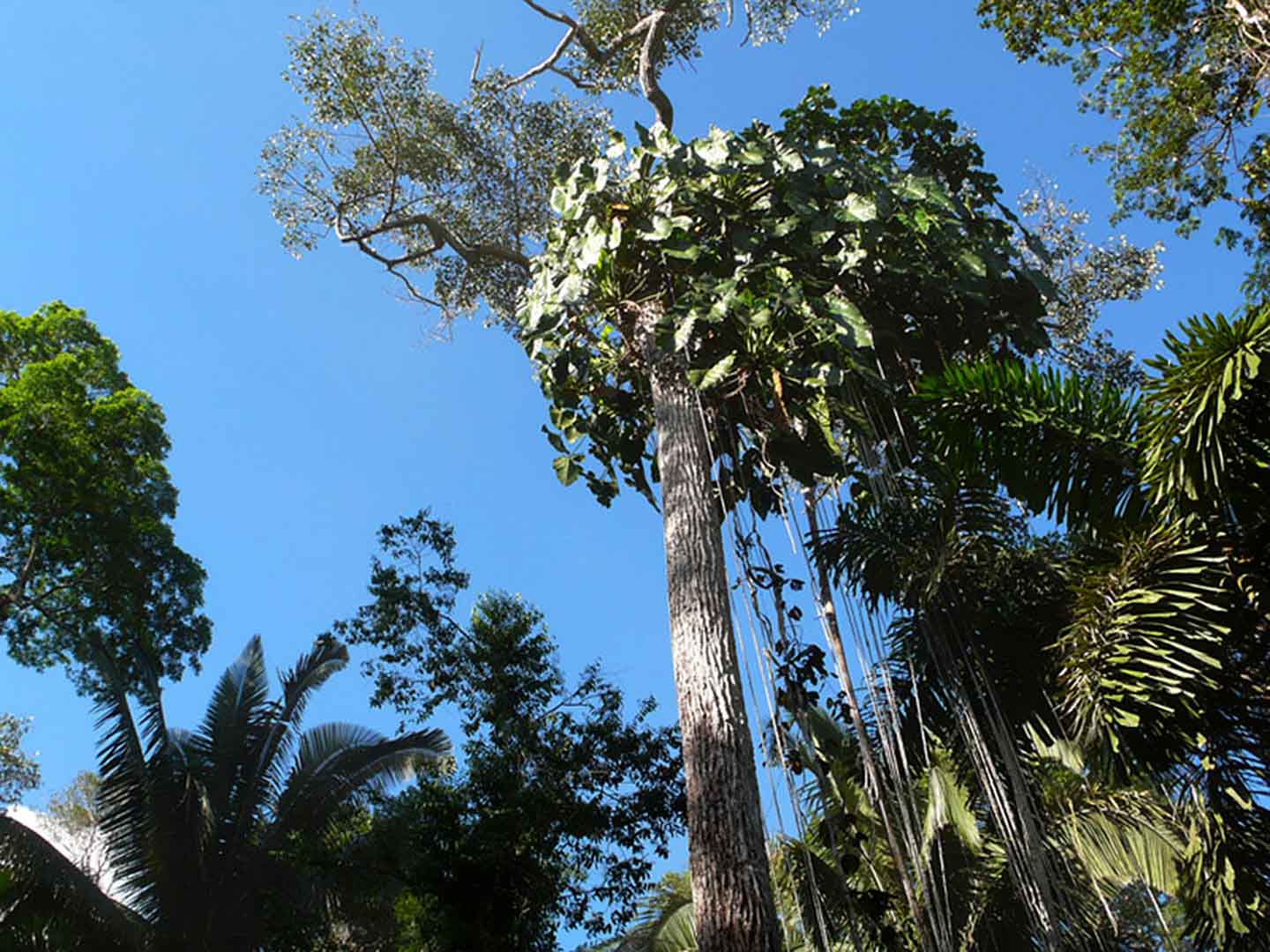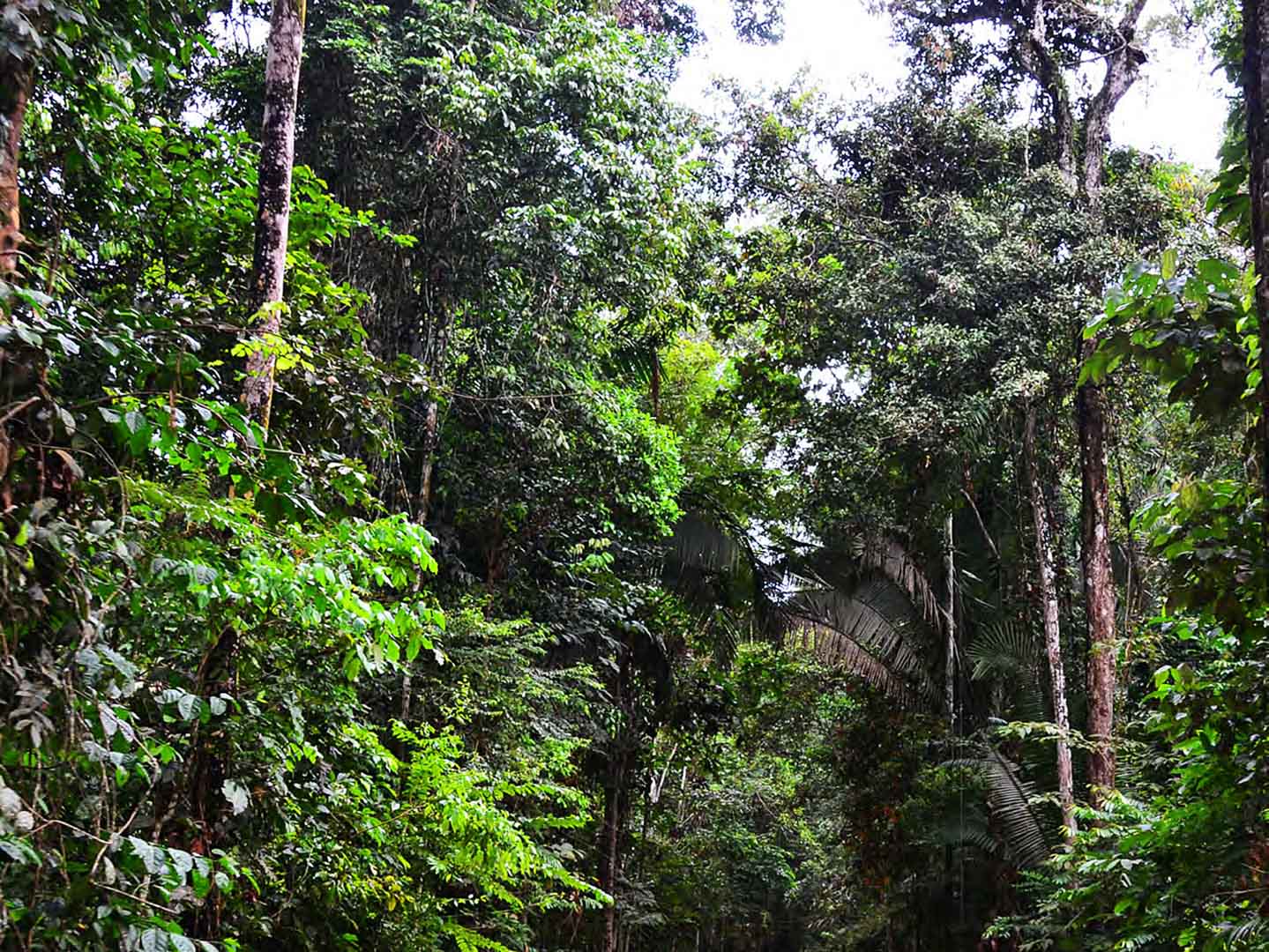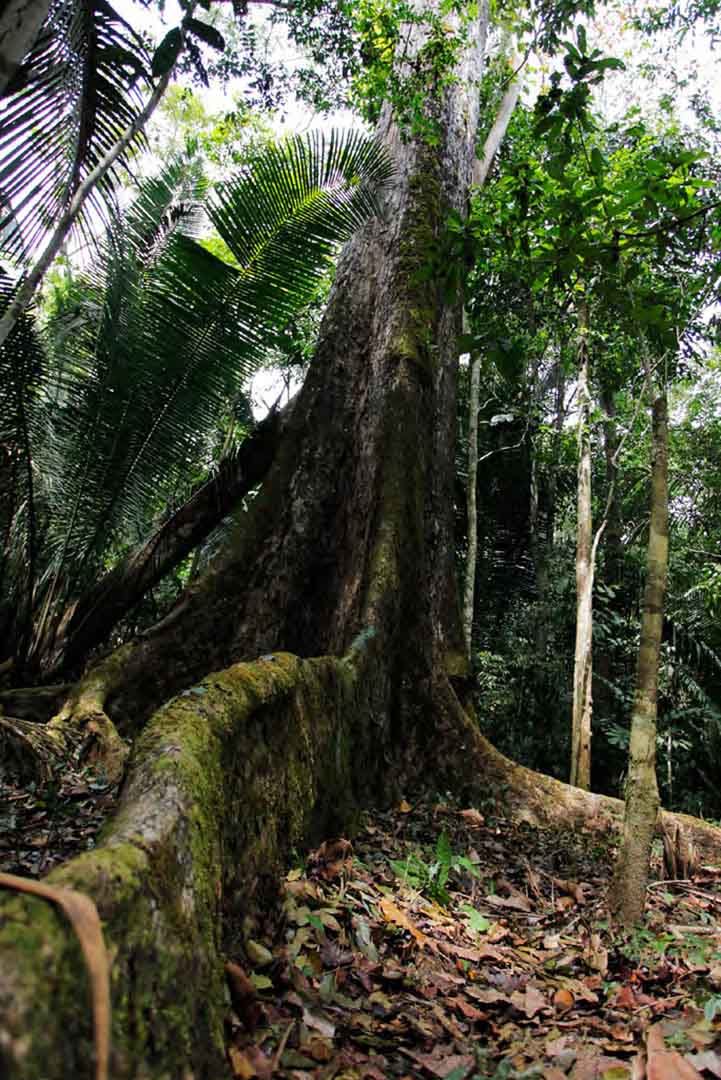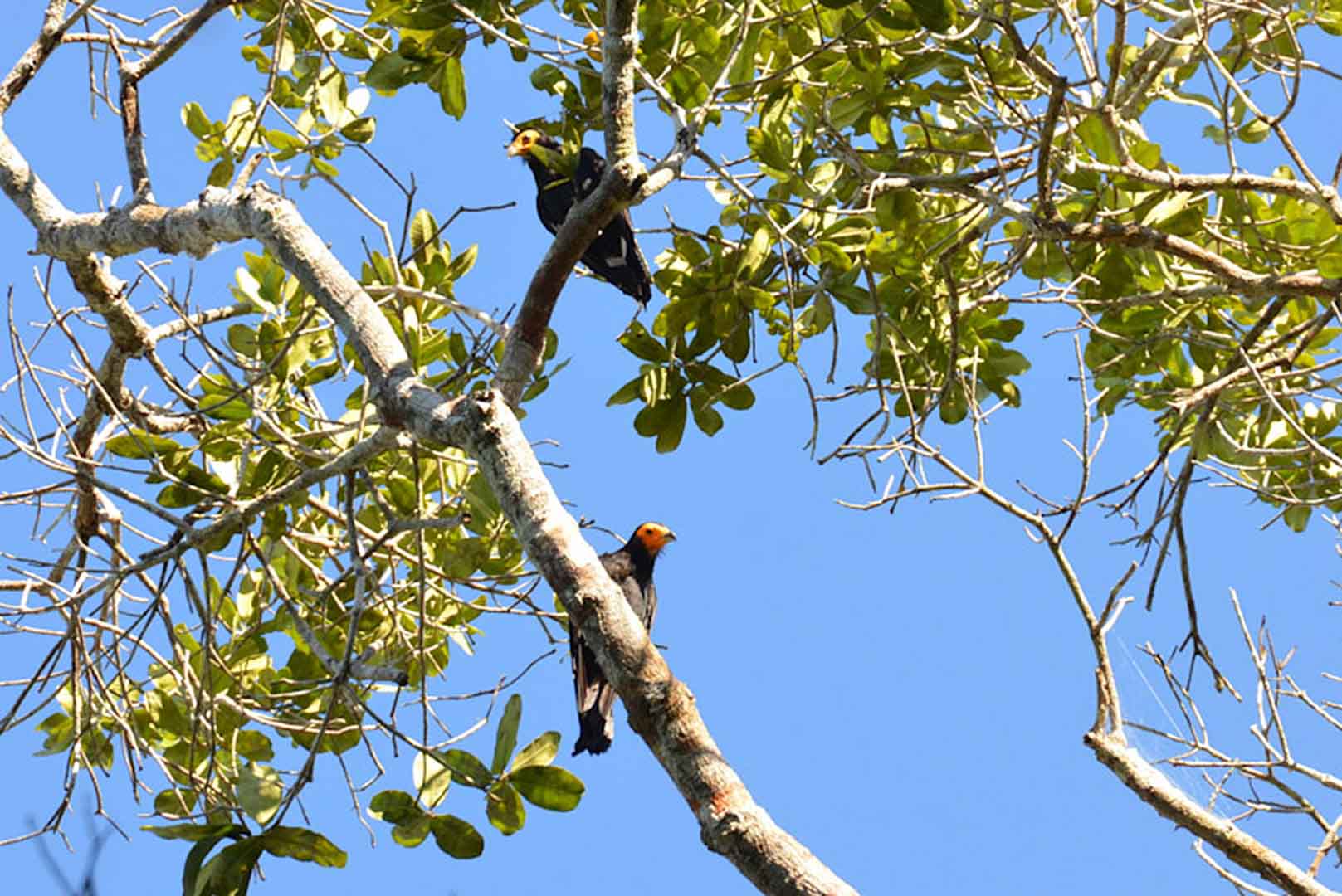Preserving 71,000 hectares of Amazon rainforest
The Santa Maria project protects over 71,000 hectares of the Brazilian Amazon rainforest from deforestation and slash-and-burn. The Colniza region has the second highest deforestation rate in the Amazon. In the eighties, so-called "Grileiros" occupied the country and enriched themselves with tropical wood. Mining as the development engine of the region became unprofitable in the 1990s. Colniza was turned into a ghost town, with a high crime rate and wood being one of the few sources of income.
The climate project has created alternative and long-term jobs. The area is continuously monitored on the basis of a management plan. Sustainable forest management ensures that sufficient biomass grows back and that the forest can regenerate. The major part of the project forest area is FSC-certified.

Forests are not only among the planet's most important carbon reservoirs. They also are home to an enormous diversity of species and are the livelihood for all people. However, global forest areas have declined sharply in recent decades due to increasing settlement, agricultural use, illegal logging and mining.
Forest protection projects ensure that forests are preserved in the long term and that the protection of forests is given a higher value than their deforestation. Together with the local population, project participants protect the area from negative influences. To allow for this the projects create alternative sources of income and educational opportunities. Depending on the project region, forests store varying amounts of carbon per hectare. Particularly high amounts of carbon are stored in the vegetation and soil of tropical swamp forests, primary rainforests, or mangroves. Forest protection projects in the ClimatePartner portfolio are registered with international standards.
Explore our projects
Biochar for Climate Action, Healthy Soils, and Better Harvests

A certified climate project combined with additional commitment

Expansion of renewable energy generation in Asia

Ceramic water filters save CO2 and improve health

Improved cookstoves worldwide – for better health and cleaner air

A certified climate project combined with additional commitment

Powering access to renewable energy in Africa

A certified climate project combined with additional commitment

Restored ecosystems remove carbon

Turning degraded farmlands into healthy ecosystems

Improved cookstoves - better for health and the environment





